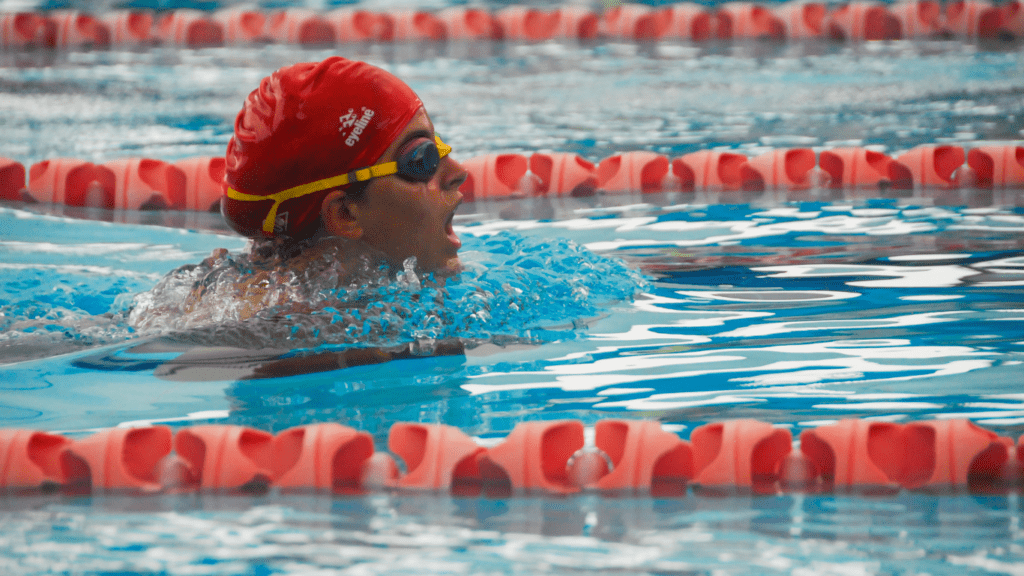Diving into the world of swim training, I’ve witnessed firsthand the transformative impact of technology on athletes’ performance in the water. From advanced wearable devices tracking every stroke to underwater cameras capturing the nuances of technique, technology has revolutionized how swimmers refine their skills. In this article, I’ll explore the pivotal role technology plays in elevating swim training to new heights.
As a seasoned swim coach, I’ve embraced innovative tech tools that provide real-time feedback and in-depth analysis, empowering swimmers to make precision adjustments and maximize their potential. Whether it’s biofeedback systems optimizing stroke efficiency or virtual reality simulations enhancing mental focus, the marriage of technology and swim training is a game-changer. Join me on this journey as we delve into the exciting ways technology is shaping the future of competitive swimming.
The Evolution of Swim Training Techniques
Swim training techniques have significantly evolved with the integration of technology, revolutionizing how swimmers enhance their skills and performance. Advanced wearable devices and underwater cameras have transformed conventional training methods, providing swimmers with real-time feedback and precise analysis for continuous improvement.
From Conventional to Tech-Enhanced Training
In the past, swim training primarily relied on manual observations and coach feedback, limiting the ability to pinpoint specific areas for improvement. However, with the advent of technology in swim training, swimmers now have access to a wide range of high-tech tools that offer detailed insights into their technique, efficiency, and performance metrics. These tech-enhanced training methods have revolutionized the way swimmers train by providing personalized feedback and data-driven strategies for optimizing their strokes and overall efficiency.
Key Milestones in Swimming Technology
The evolution of swimming technology has seen several key milestones that have shaped the way swimmers approach training sessions. From the introduction of waterproof fitness trackers that monitor heart rate and stroke count to the development of underwater cameras that capture every aspect of a swimmer’s technique, technology has played a pivotal role in enhancing training methodologies. Additionally, the emergence of biofeedback systems that provide instant performance data and virtual reality simulations that recreate competitive swim scenarios have further elevated the standards of swim training, allowing swimmers to simulate race conditions and fine-tune their skills with precision.
Current Technology Used in Swim Training
Swim training has witnessed significant advancements through the integration of cutting-edge technology. Two key components driving this transformation are wearable devices and data analytics. Let’s explore how these technological innovations are revolutionizing the field of swim training.
Wearable Devices and Their Impact
I’ve seen a notable shift in swim training with the widespread use of wearable devices. These high-tech gadgets, ranging from waterproof fitness trackers to biofeedback systems, are instrumental in providing swimmers with real-time data and performance metrics. By leveraging wearable technology, swimmers can monitor their strokes, analyze their technique, and track their progress more efficiently than ever before. These devices have become indispensable tools for optimizing training routines and enhancing overall performance.
Data Analytics in Swim Performance
Data analytics plays a pivotal role in enhancing swim performance. Through advanced data analysis techniques, coaches and swimmers can gain valuable insights into various aspects of training, such as stroke efficiency, lap times, and heart rate variability. By leveraging data-driven strategies, swimmers can identify areas for improvement, set precise performance goals, and track their achievements over time. The use of data analytics has revolutionized the way swim training is approached, enabling athletes to fine-tune their skills with unparalleled precision and efficiency.
Benefits of Technology in Swim Training

Technology plays a pivotal role in revolutionizing swim training, offering a myriad of advantages that enhance swimmers’ performance and safety.
- Improved Technique and Performance
I leverage wearable devices and data analytics to enhance my swimming technique and overall performance. Real-time feedback from waterproof fitness trackers allows me to refine my strokes and optimize efficiency. By analyzing detailed performance metrics and biomechanical data through biofeedback systems, I can identify areas for improvement and make targeted adjustments to enhance my skills in the water. - Enhanced Safety Measures for Swimmers
By incorporating cutting-edge technology into swim training, I prioritize safety through advanced monitoring systems and alert mechanisms. Wearable devices equipped with safety features provide real-time tracking of swimmers’ vitals and location, ensuring prompt intervention in case of emergencies. These safety measures not only offer swimmers peace of mind but also enable coaches and support teams to react swiftly to any potential risks during training sessions.
Challenges and Limitations
Technology integration in swim training brings along some challenges and limitations that need to be addressed.
Cost and Accessibility Issues
Cost and accessibility can be significant barriers to adopting technological advancements in swim training. High-end devices, such as waterproof fitness trackers and biofeedback systems, can be expensive, making them inaccessible to some swimmers and training facilities. Ensuring affordability and availability of these technologies is crucial for widespread implementation in the swim training community.
Reliability and Data Privacy Concerns
Reliability and data privacy are essential considerations when utilizing technology in swim training. Issues such as data accuracy and device reliability can impact the effectiveness of training programs. Moreover, safeguarding sensitive swim performance data and ensuring the privacy of athletes’ information are critical to maintaining trust and compliance with data protection regulations. Finding solutions to enhance reliability and address data privacy concerns is imperative for the successful integration of technology in swim training.


 is a dedicated fitness enthusiast with a deep-seated passion for swimming and holistic health. Leveraging her extensive background in competitive swimming and personal training, she provides readers with expert advice on optimizing their workouts and enhancing their overall well-being. Kiara's writing stands out for its blend of motivation and practical tips, making complex fitness concepts accessible and actionable. She is committed to helping individuals of all levels reach their fitness goals by promoting a balanced approach to exercise and nutrition. In her articles on Swim Fast Stay Fit, Kiara shares her personal experiences, training techniques, and strategies for overcoming common fitness challenges, inspiring others to lead healthier and more active lives.
is a dedicated fitness enthusiast with a deep-seated passion for swimming and holistic health. Leveraging her extensive background in competitive swimming and personal training, she provides readers with expert advice on optimizing their workouts and enhancing their overall well-being. Kiara's writing stands out for its blend of motivation and practical tips, making complex fitness concepts accessible and actionable. She is committed to helping individuals of all levels reach their fitness goals by promoting a balanced approach to exercise and nutrition. In her articles on Swim Fast Stay Fit, Kiara shares her personal experiences, training techniques, and strategies for overcoming common fitness challenges, inspiring others to lead healthier and more active lives.
